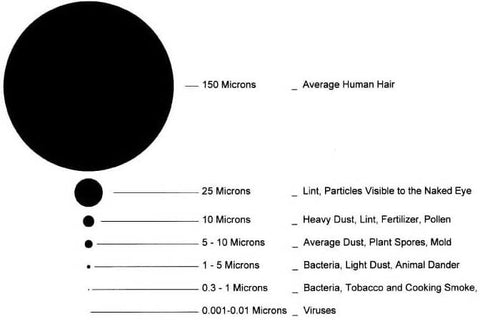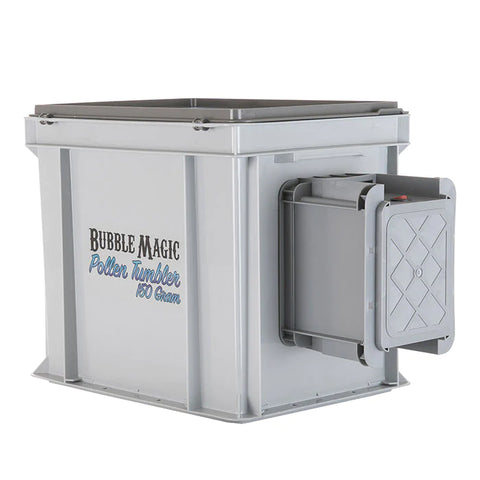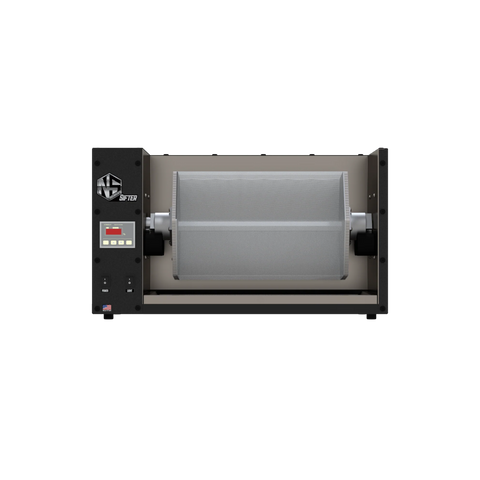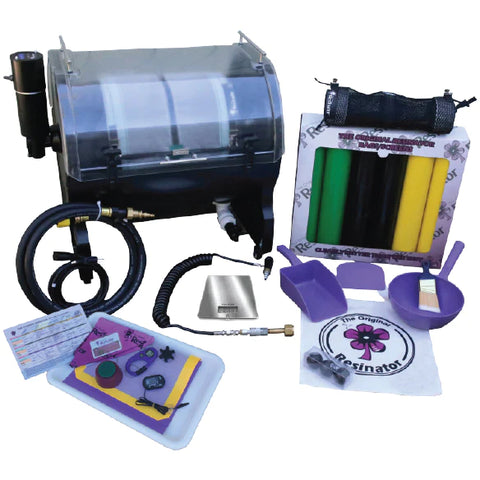
If you're reading this, chances are you know that extracting trichomes from your plant material is a vital step in unlocking the full potential of your harvest. While dry sifting may seem like a time-consuming and labor-intensive process, fear not! We're here to introduce you to a world of innovative machines that will revolutionize your dry sifting experience. In this ultimate guide, we'll explore the diverse range of dry sifters available on the market, shedding light on their features, benefits, and how they can enhance your trichome extraction efficiency. From compact sifters ideal for personal use to high-capacity machines designed for commercial operations, we'll navigate through the diverse range of options available on the market. So, sit back, relax, and prepare to embark on a journey that will forever change the way you approach dry sifting. Say goodbye to laborious extraction methods and embrace the efficiency and convenience of these remarkable devices. Get ready to unleash the full potential of your harvest with our comprehensive exploration of the world of dry sifters.
Table of Contents
- What is Dry Sifting?
- What is a Dry Sift Tumbler?
- Benefits of Using a Dry Sift Tumbler
- What Makes an Excellent Dry Sift Tumbler?
- How to Achieve High Yields
- Best Dry Sift Tumblers
- Entry-level: Bubble Magic Pollen Tumbler
- Mid-grade: NS Sifter
- Professional: Geenbroz
- Newcomer/Industrial: Tom’s
- Special mention: Resinator
What is Dry Sifting?

Micron ratings
Dry sifting is a process that filters trichomes from the plant material, refining it through a set of screens with different micron ratings. A micron rating refers to the size of the mesh openings in the screens used during dry sifting, which determines the fineness of the trichomes collected. Lower micron ratings indicate finer screens that allow only smaller trichomes to pass through, resulting in a higher quality and more potent final product. The size of trichomes can vary, but on average, trichomes range in size from 25 to 150 microns. Therefore, when sifting trichomes, screens with micron ratings within this range are commonly used to effectively separate and collect them.
Sifting is an excellent way to maximize your plant’s yields, as you can use this technique to collect trichomes. This is why many growers trim buds with a sieve to collect the trichomes that fall off. The hash from a dry sieve can be used to make hand hash or sprinkled on buds to improve the potency.
Now, dry sifting has its advantages. It’s an excellent way to maximize trichomes from dry trims incompatible with bubble hash. Because the material is dry, you don’t need to dry it or use a machine such as a freeze dryer to hasten the process. And if you’re looking to extract rosin, material collected from dry sifting is purer and more potent for removing.
What is a Dry Sift Tumbler?
A dry sift tumbler extracts these trichomes while minimizing human handling. Trichomes can stick to different surfaces, including human skin, so a dedicated machine can reduce human contact with your plant material.
Dry sift tumblers also speed up extracting and filtering the trichomes. You don’t need to rub the plant material to remove excess particles repeatedly; the machine does the job for you.
Benefits of Using a Dry Sift Tumbler
Dry sift tumblers are known for gently handling your plant material, whether buds or dry trims, in a micron screen tumbler to remove kief. By doing so, you get to maintain the terpene profile and potency. Likewise, high-quality kief produced from dry sifting can melt and vaporize properly.
Because there is less human handling in a dry sift tumbler, you get more from every harvest. With a dedicated machine, you can even save time and energy. Remember, you don’t have to dry the extracted trichomes in this method since you’re working with a dry material.
What Makes an Excellent Dry Sift Tumbler?
One key factor in choosing a dry sift tumbler is the available screen sizes. Micron sizes matter, especially if you want to get the best quality. Using the correct micron sizes reduces the amount of plant material that gets into the material extracted.
As a refresher, the lower the micron rating, the easier your material can pass through the screens. Your base material must be sifted through a high micron rating and work towards a lower one. Start with 250 microns if available and work towards lower micron ratings.
Another feature to look at is variable speed. You need to ensure that you can control the sifting of your material to ensure that they don’t turn to dust. The aim is to extract trichomes and not create plant particles. Remember that sifting varies per plant, so you may need to play around with speed.
How Do You Get Higher Yields?
One trick to ensure you get more yields is ensuring the trichomes dislodge easily from the plant material. This can easily be achieved when the natural room temperature is cold, such as in an air-conditioned room. Some growers chill their plant material to drop the temperatures if the room temperature is not cold enough. However, other growers will argue that freezing before sifting may introduce added moisture, which may require drying after sifting.
You shouldn’t just settle on using a single-micron rating when using a dry sift tumbler. You may need to change screens and run your material once more to try and dislodge more trichomes.
Dry sift tumblers also have variable speed controls, so you need to adjust the speed as needed. Working too fast can result in more plant material in your extracts. Working too slowly will make the trichomes harder to dislodge, especially with chilled plant materials reaching room temperature.
Best Dry Sift Tumblers
With the benefits that dry sifting offers, dry sifting tumblers have emerged to help you make the job easier. They offer various benefits and are also designed for different types of users.
Bubble Magic Pollen Tumbler
The Bubble Magic Pollen Tumbler was designed for beginners and those running small-scale operations. These tumblers were designed to work at room temperature, so you don’t need water or ice to aid in the extraction.
You can use 125, 145, and 185-micron screens with this tumbler. Operating the Bubble Magic Pollen Tumbler is easy, and it takes up to 15 minutes to extract trichomes with each run.
There are three models to choose from: Pollen Tumbler 150, which has a 150-gram capacity; Pollen Tumbler 500, which has a 500-gram capacity; and; Pollen Tumbler 1500, which can run up to 1500 grams of material.
NS Sifter
The Nugsmasher NS Sifter and Greenbroz Sifters are worth considering for mid-tier sifters.
The NS Sifter can handle up to two pounds of plant material and features three available micron sizes: 90, 120, and 160. To ensure you get the best quality extracts possible, the NS Sifter has built-in LED work lights to help you see inside the tumbler. Each NS Sifter has a control panel to help you manage speed settings from 10 – 50 RPM to tailor-fit each extraction based on the plant material.
Greenbroz
Greenbroz also has its machines for dry sifting: the Alchemist 215 and Alchemist 420. The Alchemist 215 dry sifter can process up to three pounds of material, yielding up to 20 percent of the material weight. The Alchemist 420, meanwhile, can handle up to 10 pounds of material.
Both machines have 180-micron screens with the option to swap in 135 or 80-micron screens. Each Alchemist dry sifter has a built-in timer and can gently run up to 20 RPM.
Tom’s
Tom’s Tumble Trimmers also joins the dry sifter market segment with its machines, the Tom’s Biomass Refiner and the Tom’s Grasshopper.
The Tom’s Biomass Refiner can handle up to 500 pounds of material. With its auger feed and combined with a conveyor system, you can run this dry sifter to process your material to maximize your workflow continuously.
Meanwhile, the Tom’s Grasshopper is a cryogenic dry sifter. Like its Tumbler Trimmer counterparts, the Tom’s Grasshopper infuses liquid CO2 to freeze your trims to detach the trichomes from the plant material easily. The Tom’s Grasshopper features swappable kief screens, with micron ratings of 110 and 150.
The Resinator
The Resinator deserves special mention here. Not only does it sift your plant material, but it also works as a trimmer.
The Resinator has two models, the OG and XL. Like the machines from Tom’s, the Resinator also lets you infuse liquid CO2 in the drums of these machines for easy trimming and sifting. The OG has a sifting capacity of up to three pounds per cycle, while the XL increases that to 15 pounds.
Both machines have the needed attachments to start liquid CO2 infusion in both cases.
Conclusion
Dry sifting has a lot of benefits when it comes to getting extracts. It’s one of the purest extraction methods, as it does not introduce manufactured chemicals that can compromise the quality of your extracts. It’s a good option for anyone looking to maximize yields, although challenges still come with it. But the good thing is, with the emergence of dry sifting tumblers, one can expect improvements in the coming years that can help improve the quality extracted from dry sifting.









